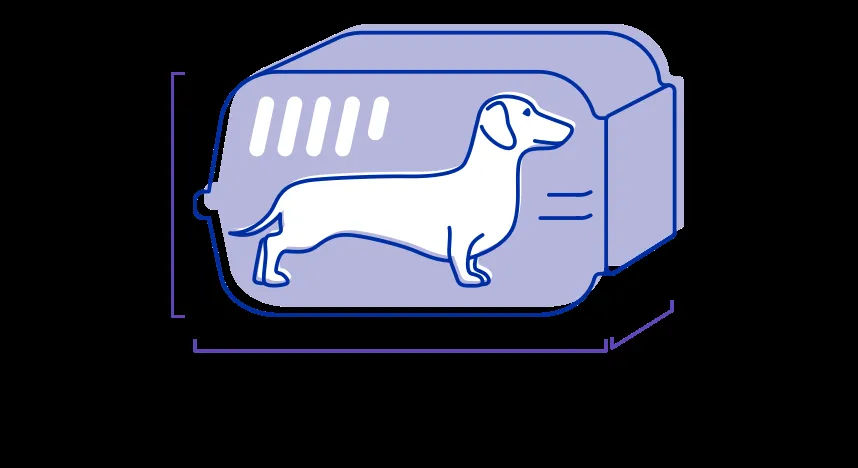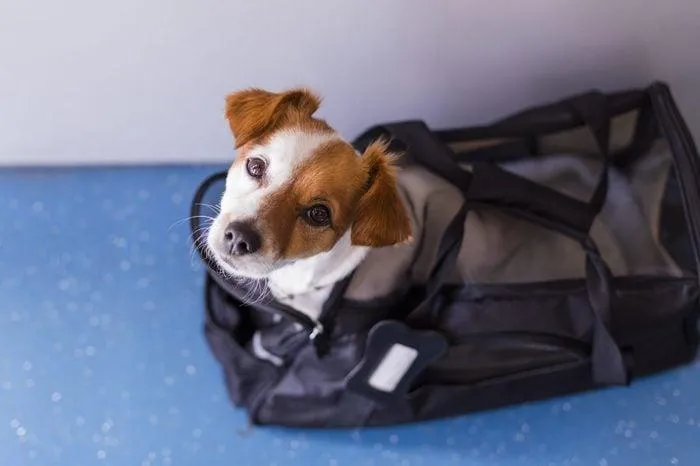Can I Buy My Dog a Seat on a Plane?
If you’re planning to fly with your dog, one of the main questions on your mind is likely whether you can purchase an actual seat for your pet. While air travel regulations for animals have loosened up in recent years, the rules around seating can still be confusing. In this article, I’ll break down the options airlines offer for dog seating and provide tips based on my experiences flying with pets.
Airline Policies on Purchasing Dog Seats
Most major US airlines like American, Delta, and United allow you to purchase an extra seat for your dog to travel in the cabin, but there are some key things to know:
- Size limits apply. Only dogs small enough to fit comfortably in a carrier that can fit under the seat in front of you (typically around 20 lbs or less) are allowed to fly in the main cabin. Larger dogs must go in the cargo hold as checked baggage.
- Advance purchase required. You’ll need to book the extra “dog seat” when making your original flight reservation. Extra seats can’t be purchased at the airport.
- Fee charged per direction. The fee, usually $125 each way, is charged for each stop on your itinerary, not just your overall roundtrip. So a flight with a connection would be $125 each for the first flight and second flight.
Most budget airlines like Spirit and Frontier do not offer any pet seating options and require all animals large enough to be in cargo. Smaller pets can travel in the cabin if they fit securely in a carrier under the seat.
Is It Worth Buying a Dog Seat?
From my experiences flying with dogs both in cargo and in the cabin, I think purchasing a seat can be worthwhile depending on your situation. Here are a few factors to consider:

- Your dog’s personality. Dogs anxious about flying or prone to motion sickness may feel more secure in the cabin with you versus being stored below with baggage.
- Length of flight. For short 1-2 hour flights, checking a dog may be fine. But on long multi-hour flights, being in the cabin is preferable for their comfort.
- Connection risks. Any time your dog must be transferred increases chances of lost, delays, or other issues. Non-stop flights remove that risk.
- Season. Cargo holds can get extremely hot or cold depending on weather. Cabins have climate control for your dog’s safety year-round.
In many cases, that $125 fee each way is worth the peace of mind to fly with your pet. But for shorter flights, checking may work too if your dog is very relaxed about flying.
Tips for Flying with Your Dog in the Cabin
If you do opt to purchase a seat for Rover and bring him in the cabin, here are some tips to make the flight go smoothly:
- Use an FAA-approved carrier. It needs to fit completely under the seat to avoid blocking aisles. Practice getting your dog comfortable inside it before flying day.
- Ask for “Pet in Cabin” tag at check-in. Let agents know in advance so they are not surprised at the gate.
- Bring supplies in carry-on only. Food, water, medications, toys, treats, waste bags and cleanup supplies in case of “accidents”. No checked baggage with pet items.
- Consider pet anxiety meds. Ask your vet if medication can help for the stress of take-off/landing noise and motion. It’s safer than unmedicated pets potentially barking or crying.
- Remain near your dog at all times. Do not allow them to roam freely or interact with passengers who did not agree to fly with animals.
Following airline policies and these tips can help ensure a positive cabin travel experience for you and your pup. But flying pets is not without risks, so consider driving or taking a train for trips under 6 hours if possible instead.
Alternatives to Flying With Your Dog
If the cost and stress of flying Fido is concerning to you, some other transportation options to consider include:

- Drive your dog yourself. For trips under 10 hours, it’s often more comfortable for dogs than flying. Rent a car or bring your own vehicle.
- Hire a pet transportation service. Companies like PetRelocation.com or Paws2Go provide drives for dogs with trained pet handlers instead of airline cargo.
- Take the train if possible. Amtrak allows small dogs on board for a $25 fee each way on many routes if crated or leashed. Check policy details.
- Consider cargo flight insurance. If flying is necessary, purchase travel insurance in case of delays, weather/mechanical problems, or issues in baggage handling that could harm pets.
weighing all risks and expenses up front will help you choose the safest and most comfortable transportation method for your loyal companion. Their well-being should be the top priority when relocating or traveling with animals.
In Summary…
To answer the original question – yes, many airlines do offer the option to purchase an extra seat for small dogs so they can travel in the passenger cabin with you. However, it’s not necessarily the best choice in every situation depending on flight duration, connections, weather, and your individual dog. Consider driving, professional transport services, or trains as well if feasible for your trip. Proper planning and preparing your pet with training, medication if needed, and obedience will give them the best chances of a smooth flight no matter which method you choose. I hope this overview of the dog seat policy details along with personal experience tips has helped provide insight into options for your upcoming travels along with your furry friend!
Buying a Seat for Your Dog On a Plane
| Airline | Additional Fee | Requirements |
|---|---|---|
| Delta | $125 each way | Dog must be in carrier under seat or in cabin |
| American | $125 each way | Dog must remain in carrier under seat entire flight |
| United | $125 each way | Dog must remain in soft-sided carrier that fits under seat |
| Alaska | $100 each way | Dog must remain in carrier under seat entire flight |
| JetBlue | $125 each way | Dog must remain in carrier that fits under seat entire flight |
FAQ
-
Can I buy my dog their own seat on a plane? Basically yes, you can buy your doggie their own seat, but it might cost a bunch extra. Most airlines let you transport pets as carry-on for a fee, or you can purchase them an extra ticket to ride in their own seat.
-
What are the requirements for a dog to fly in the cabin? Generally dogs need to be able to sit at your feet without taking up another passenger’s space. They also gotta be able to fit comfortably in a pet carrier under the seat in front of you. The airline will have size and weight limits too so check those beforehand. Also make sure your pup is behavin’ and not too rowdy for plane travel.

-
How much does it cost to buy an extra plane ticket for my dog? Ticket prices can vary a lot by airline, but on average you’re lookin’ at a couple hundred bucks at least. Some carriers charge per pound too, so bigger dogs end up costing more. Then there may be an “unaccompanied minor” service charge added on for your pup flyin’ solo. It adds up fast!
-
Is it safe for dogs to fly in the cabin? For the most part it seems safe, as long as your dog is chill and well-behaved. They’d be in a carrier under the seat where drops and bumps are less bumpy. However, planes can get loud and scary for sensitive pups. There’s also a chance for stress from being in close quarters with strangers for a long ride. So it ain’t totally risk-free perhaps.
-
What are the alternatives to buying an extra plane ticket? You could transport Fido as check-in luggage, but that can be risky if anything goes wrong. Or look into pet shipping services that arrange private ground transport instead of flying. At the same time, flying in cargo holds ain’t so great either due to lack of supervision. Your best option may depend on little Ranger.
-
Would you recommend buying a separate ticket over carrying on? There are pros and cons to each. Carrying on is cheaper for sure, but your pup may end up crammed under the seat in a tiny carrier for hours. A separate ticket allows them flexibility to roam free, stretch, and look out the window – seems like a pretty sweet deal! However, it will cost a packet. You gotta weigh comfort vs price I guess.

